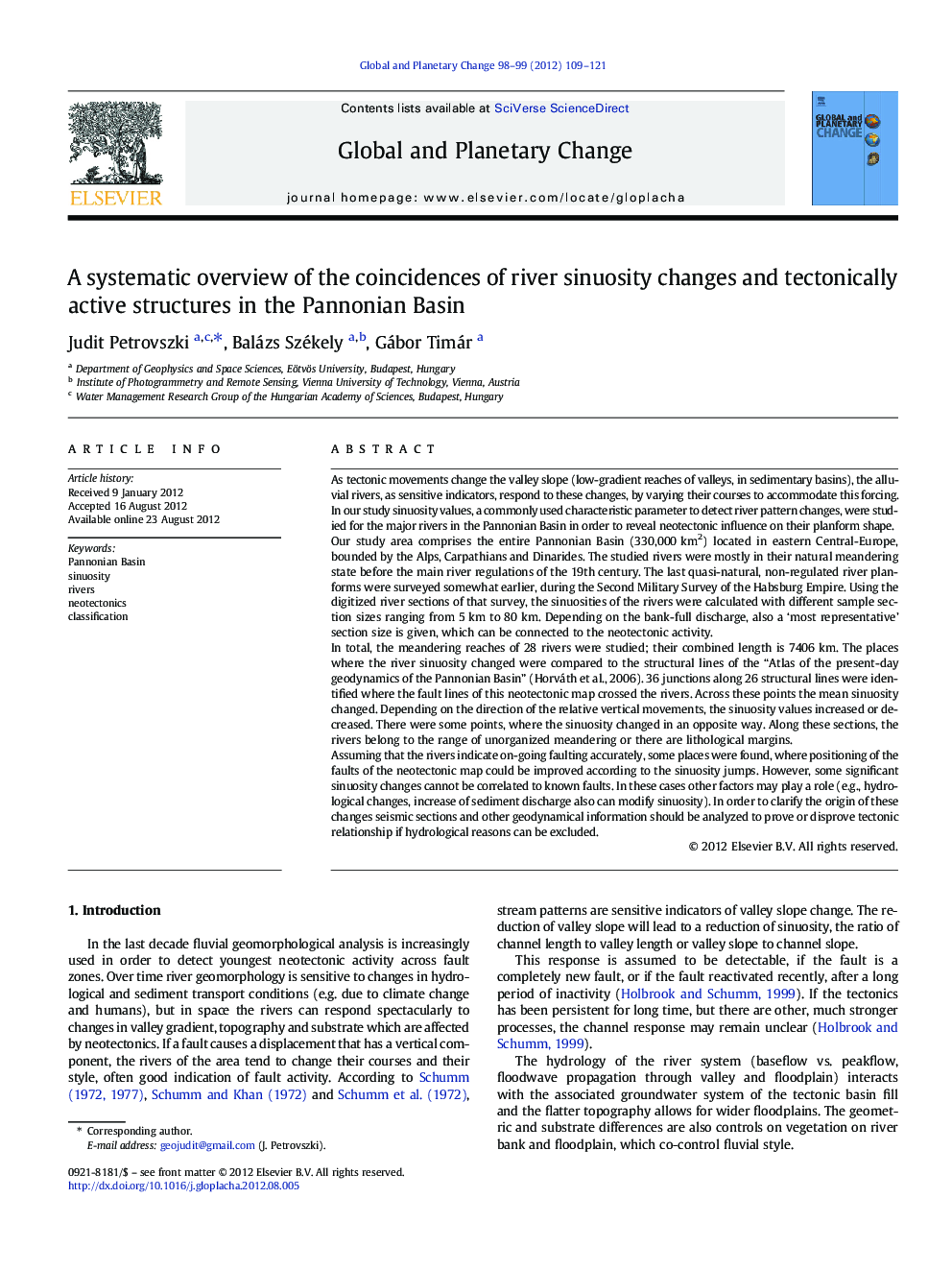| کد مقاله | کد نشریه | سال انتشار | مقاله انگلیسی | نسخه تمام متن |
|---|---|---|---|---|
| 4463678 | 1621682 | 2012 | 13 صفحه PDF | دانلود رایگان |

As tectonic movements change the valley slope (low-gradient reaches of valleys, in sedimentary basins), the alluvial rivers, as sensitive indicators, respond to these changes, by varying their courses to accommodate this forcing. In our study sinuosity values, a commonly used characteristic parameter to detect river pattern changes, were studied for the major rivers in the Pannonian Basin in order to reveal neotectonic influence on their planform shape.Our study area comprises the entire Pannonian Basin (330,000 km2) located in eastern Central-Europe, bounded by the Alps, Carpathians and Dinarides. The studied rivers were mostly in their natural meandering state before the main river regulations of the 19th century. The last quasi-natural, non-regulated river planforms were surveyed somewhat earlier, during the Second Military Survey of the Habsburg Empire. Using the digitized river sections of that survey, the sinuosities of the rivers were calculated with different sample section sizes ranging from 5 km to 80 km. Depending on the bank-full discharge, also a ‘most representative’ section size is given, which can be connected to the neotectonic activity.In total, the meandering reaches of 28 rivers were studied; their combined length is 7406 km. The places where the river sinuosity changed were compared to the structural lines of the “Atlas of the present-day geodynamics of the Pannonian Basin” (Horváth et al., 2006). 36 junctions along 26 structural lines were identified where the fault lines of this neotectonic map crossed the rivers. Across these points the mean sinuosity changed. Depending on the direction of the relative vertical movements, the sinuosity values increased or decreased. There were some points, where the sinuosity changed in an opposite way. Along these sections, the rivers belong to the range of unorganized meandering or there are lithological margins.Assuming that the rivers indicate on-going faulting accurately, some places were found, where positioning of the faults of the neotectonic map could be improved according to the sinuosity jumps. However, some significant sinuosity changes cannot be correlated to known faults. In these cases other factors may play a role (e.g., hydrological changes, increase of sediment discharge also can modify sinuosity). In order to clarify the origin of these changes seismic sections and other geodynamical information should be analyzed to prove or disprove tectonic relationship if hydrological reasons can be excluded.
► Sinuosity values were studied for major rivers (in total 28) in the Pannonian Basin.
► We introduced the classification of multiple window-size based sinuosity spectrum.
► For the classification, we did not need the main parameters of the river.
► It uses statistically relevant amount of data in a robust way to detect changes.
► Some specific classes seem to be correlated to tectonically active zones.
Journal: Global and Planetary Change - Volumes 98–99, December 2012, Pages 109–121